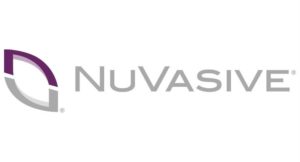NuVasive brings its contribution in spine surgery through procedurally-integrated solutions such as Modulus® XLIF® titanium implants, a 3D-printed, fully porous device.
This solution proposes another offer for the Company’s flagship XLIF procedure, by laying emphasis on a continued commitment to innovation and in developing first-of-its-kind technology to support its lateral spine procedure.
The Modulus titanium implants
Made with the use of 3D printing, this implant enables to create an organic, porous architecture that mimics the porosity and stiffness of bone for reduced stress shielding.
Modulus XLIF thus creates an ideal environment for bone in-growth. With its optimized architecture, one can obtain improved imaging characteristics compared to conventional titanium interbody devices.
“We’ve seen an increase in surgeon preference to use titanium interbody options in spine surgeries, and we were confident we could develop a titanium option that delivers the porous properties surgeons need,” said Matt Link, executive vice president of strategy, technology and corporate development of NuVasive.
“Modulus XLIF maximizes the potential of 3D-printed spinal implants through the application of unique and advanced software optimization processes. This product launch further represents our continued commitment to advancing surgical materials, and delivering best-in-class implants that provide superior osseointegration and biomechanics.”
For Kade Huntsman, MD, orthopedic spine surgeon with the Salt Lake Orthopaedic Clinic, surface architecture is a very important part of the fusion process. “The design of Modulus XLIF maximizes the potential of additive manufacturing through the combination of highly porous endplates with an optimized internal structure.”
For further information about 3D Printing, follow us on our social networks and subscribe to our newsletter!
//pagead2.googlesyndication.com/pagead/js/adsbygoogle.js
(adsbygoogle = window.adsbygoogle || []).push({});
